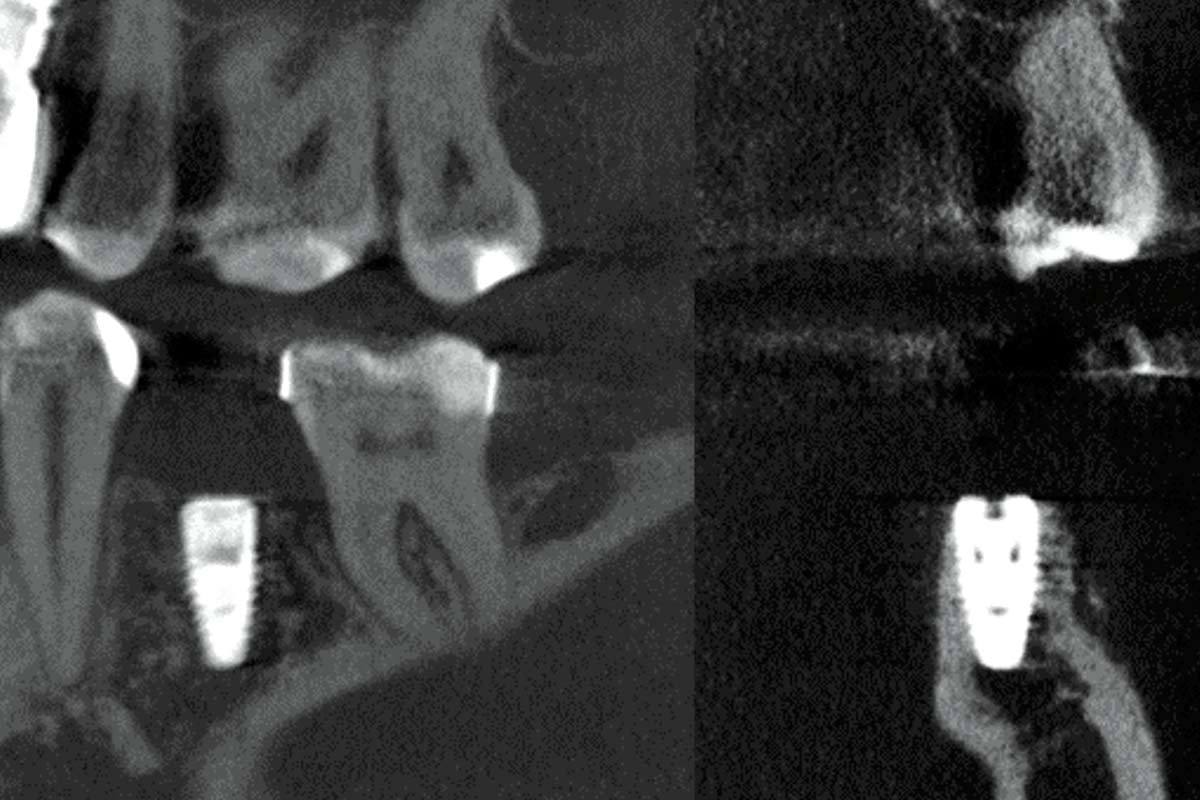Study
Blašković M, Blašković D, Hangyasi DB, Peloza OC, Tomas M, Čandrlić M, Rider P, Mang B, Kačarević ŽP, Trajkovski B. Membranes. 2023; 13(8):691.
https://doi.org/10.3390/membranes13080691
GOAL
In this study, possible effects of the hyaluronate contained in cerabone® plus on the degradation rate of the NOVAMag® membrane were investigated.
METHODS
To study the interaction between the biomaterials, in vitro tests were performed, and clinical results were retrospectively analyzed.
In vitro, the fate of the magnesium membrane was studied by measuring changes in pH and electric conductivity as indicators of membrane degradation. To this end, the NOVAMag® membranes were incubated in phosphate-buffered saline over a period of 360 h at room temperature, either alone or in presence of bovine bone graft with hyaluronate (cerabone® plus) or without (cerabone®).
The clinical evaluation considered two patients that underwent implant surgery and simultaneous Guided Bone Regeneration (GBR) in the lower jaw using the magnesium membrane in combination with either cerabone® plus or cerabone®, both mixed with autogenous bone chips.
RESULTS
In vitro
No effects of the bone grafts on the pH of the magnesium membrane were observed. The results on the measured pH values demonstrated that the hyaluronate contained in cerabone® plus did not induce an acidic environment that could increase the rate of degradation of the membrane.
Different electric conductivity profiles were noticed caused by the release of calcium and magnesium ions by the tested biomaterials, thus indicating the formation of degradation products. The combination of cerabone® plus and NOVAMag® membrane caused a decrease in the conductivity in the first 24 h, which subsequently increased and remained stable after 96 h, thus suggesting a synergistically delayed calcium and magnesium release.
Clinical
Both patients treated with the biomaterials combinations showed excellent clinical outcomes both in terms of soft- and hard tissue regeneration. CBCT analyses six months post-operative demonstrated stable osteointegration of the placed implants.
CONCLUSIONS
- The successful combination of NOVAMag® membrane and cerabone® plus/cerabone® was demonstrated
- Both patients presented with good wound healing and excellent bone regeneration Case Patient 1
- Neither of the bone substitutes did affect the degradation rate of the magnesium membrane
- The presence of hyaluronate showed no negative influence on NOVAMag® membrane
- The used combinations of biomaterials proved to be ideal for the treatment of peri-implant bone defects

































